As a parent and also an early childhood educator I feel a great responsibility to ensure that not only my own children but also the children in my care are not exposed to harmful cleaning chemicals as they play and learn.
I know many of you reading will agree and say that it is important to keep harmful products locked away out of children's reach and it's something you do routinely…but have you also considered the effects to children (and you!) while you are using those products?
Growing numbers of children – (including my own so I have done a lot of research the last few years about this topic) have a sensitivity to many of the cleaning products on the market today. They may worsen asthma, allergies and other sensory sensitivities and they can also contribute to behaviour issues and heighten some learning difficulties.
One of my twins, Ruby, gets an awful asthma cough when exposed to cleaning products that have a distinct smell, this includes some of those that are essential oil based. She once threw up when I sprayed lavender oil/water in her room “to promote a restful sleep”! yeah, lavender didn't calm me that day I can tell you! She is ok with the lavender picked from the garden though.
She also cannot tolerate commercial air fresheners. I cannot use laundry powders with perfume as she breaks out in rashes, as does her twin. This is when I first began to make my own laundry liquid.
But is there an alternative? If you are talking about the family home then it is easy to incorporate some greener cleaning methods straight away…for those working as early childhood educators it can be a little more fraught depending on who you work for (self or centre) and the environment you work in (centre/home based). There are regulations, rules, policies and procedures to follow. A shame though that they often seem to be interpreted in many different ways. No wonder so many are confused!
I personally think many in the early childhood sector are going overboard with the cleaning they do, the products they choose to use and the expectations of staff.
Cleaning requirements in early childhood services
When we discuss sustainability in early childhood practice I think we need to explore and consider some safer and greener cleaning practices to reduce our chemical load and what we are exposing young children to on a regular basis.
How can we use fewer products and safer alternatives? Can we do that according to current health and safety regulations?
Let’s explore what we really need to do according to the 5th edition of Staying
Cleaning effectively in early childhood
- For nappy change mats – use warm soapy water, wipe with paper towel or a single use cloth that must be then put in the wash, rinse and wipe dry with more paper towel
- If possible, at lunch or rest time put out in the sun to dry
- For toys – use the dishwasher or warm water and detergent. Make sure to rinse and then leave in the sun to dry if possible. If a toy can’t be washed then don’t buy it is my recommendation. Keep a box for mouthed toys and wash at end of each day if you have babies.
- For bathrooms and toilets – Wash surfaces with detergent and warm water. There is no need to use disinfectant unless you know that the surface has been contaminated with potentially infectious material via body substances or blood.
- Disinfectant is useless unless a surface has been cleaned first. It cannot kill germs if the surface is not clean so use your detergent and dry first. Most disinfectants must also soak the surface for at least 10 minutes to be effective (check the back of the bottle and read fine print if you don't believe me!)
- If using bleach because of a gastro/contagious outbreak, blood spill or similar then you need to apply it after you have washed and dried the surface first as above. Disinfectant is only required during reportable outbreaks.
- Vinegar is unfortunately not a suitable ‘alternative’ disinfectant – it does not kill enough germs in a short space of time to be an effective surface disinfectant, it has not been tested or registered as a disinfectant. I do often use it in a spray bottle diluted well though to freshen up surfaces (and it makes a fantastic fabric softener for the washing!)
Interesting right? Seems you don't need that bright pink wash and smelly floor cleaner to ensure you are following best practice procedure. One reason I found it very difficult to wash my hands when working in child care centres was because many of them used that awful bright pink handwash that would leave me with severe dermatitis on my hands! I really hope that stuff has long gone now but I know it was a cheap option so it's probably still out there lurking!
My Green Clean Kit & Practices for Home and Daycare
- Colour coded cloths that can be washed and reused over and over – blue for bathroom, green for kitchen, purple for tables and yellow for dusting. I use paper towel for floor spills.
- Plain eco friendly/low sudsing washing detergent diluted in water in spray bottles and bleach for cleaning bathroom surfaces, kitchen and eating surfaces and nappy change mat. I apply with paper towel and dry with paper towel. You can use reusable cloths as another option when wiping down the change mat but keep in mind that you will then need to wash them after each single use so by the end of the day you might have a lot of extra washing (if also using handtowels and washers for the children) so that is more water and electricity being used which may or may not outweigh the cost and use of paper towel. Paper towel works most effectively for me so that is what I stick with but it's a personal decision.
- If I need to use bleach I dilute it only as needed as it loses it's effectiveness if stored diluted so don't put it into a spray bottle and leave it ready to use!
- I use orange or lemon essential oil diluted well in spray bottles as air freshener (Ruby isn't as sensitive to these two essential oils as long as they are diluted well)
- I always ventilate the bathroom and house as much as possible as part of my green clean plan.
- I fill my bathroom sink at nappy change times with warm water and apply detergent via spray bottle onto the mat then wipe with paper towel and the warm water.
- If I want to give the bathroom areas a good scrub I make a paste with bicarbonate of soda and a little vinegar and use a scourer or rags wrapped in those orange net bags work really well too.
- If I feel I absolutely need to use some jif or other commercial cream cleanser I do it when there are no children are in care that day and my own kids are out of the house therefore not exposing any children to potentially harmful chemicals.
- I generally avoid products with a fragrance if I can.
- 1/2 teaspoon olive oil in 1/2 cup vinegar makes a lovely wooden furniture polish, if you want to add a little fragrance without being overpowering in the home some lemon juice or essential oil works well. store in a jar with lid or recycled spray bottle and use an old tea towel or rag for applying.
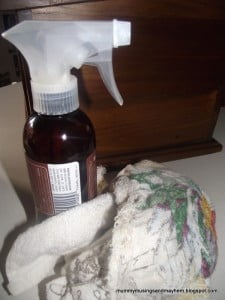
- I like to make my own laundry liquid or powder when I can. It lasts for ages and is therefore very cost effective. It also has a lovely subtle ‘clean' smell!
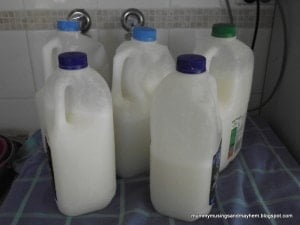
- I use vinegar in my washing machine as a cleaner and also fabric softener.
- 1/4 cup of homemade (clothes) washing liquid in warm water makes a fantastic floor cleaner.
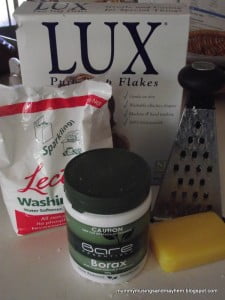
My Top 6 Cleaning Essentials
- Colour coded washable cloths for cleaning surfaces, bathroom and kitchen
- Eco friendly dishwashing detergent
- Vinegar
- Orange essential oil (in very small quantities)
- Bi carb of soda
- Sunlight pure soap bars or lux pure soap flakes
Would you consider some greener cleaning alternatives in your home or workplace?

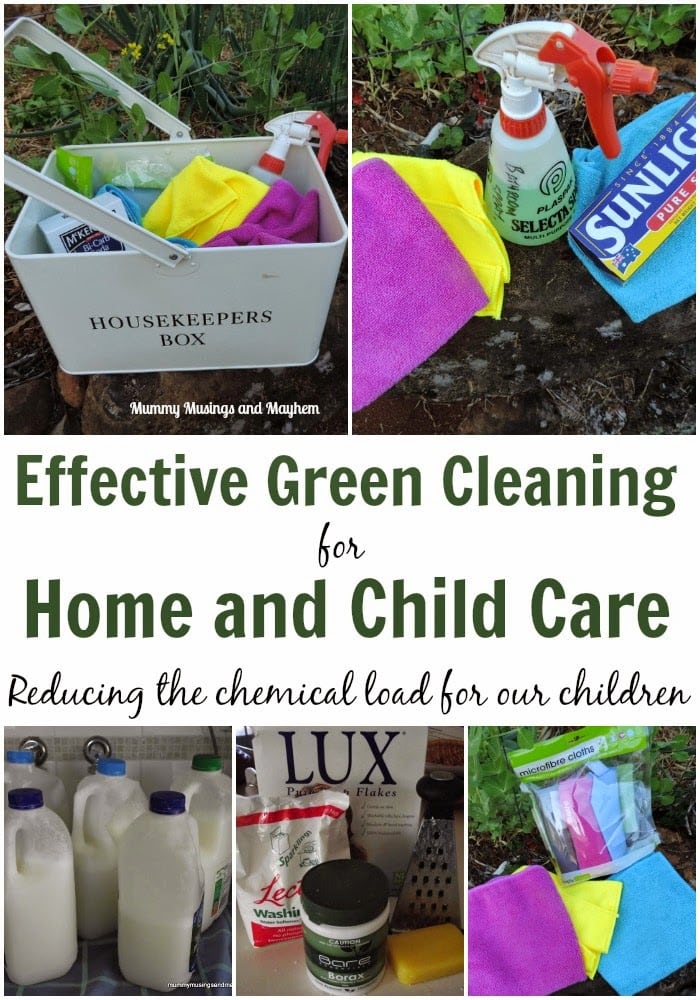
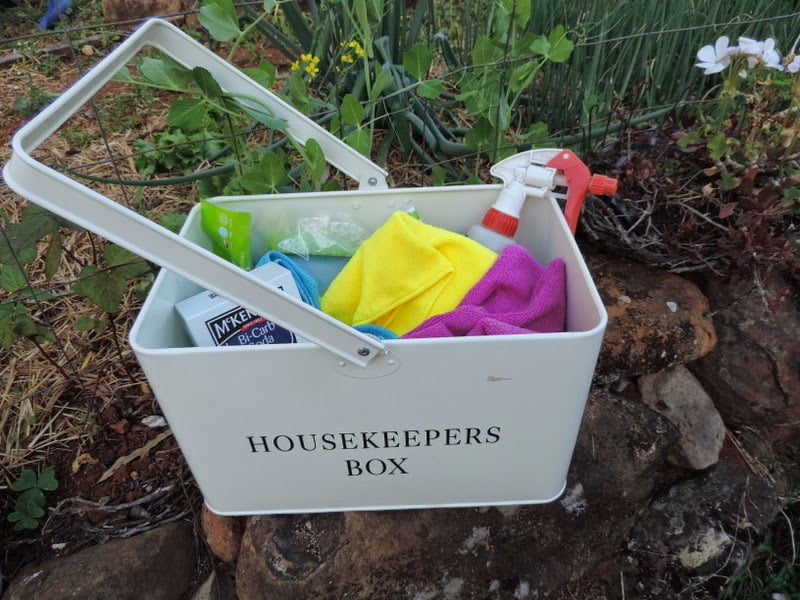
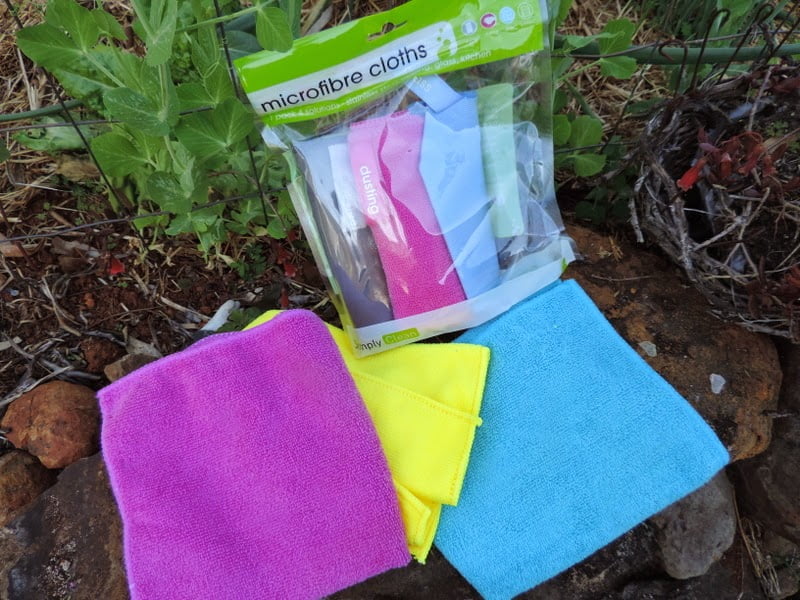
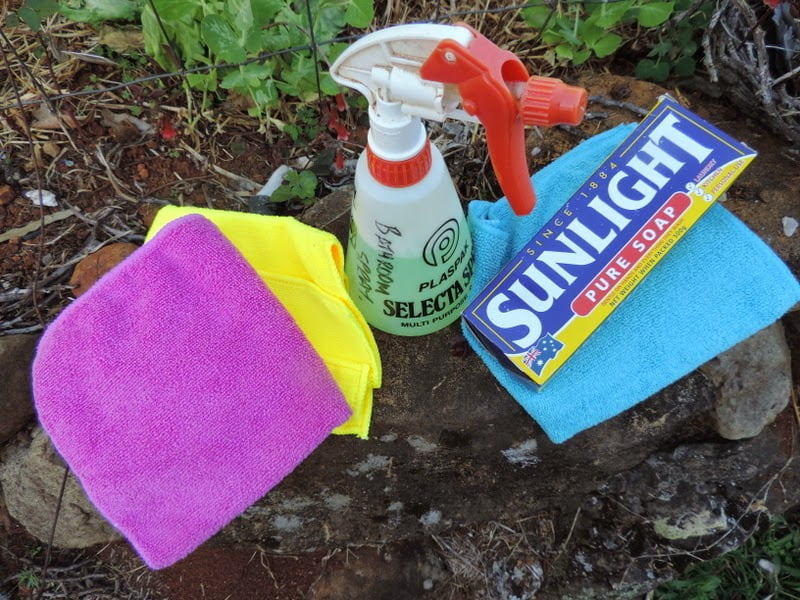
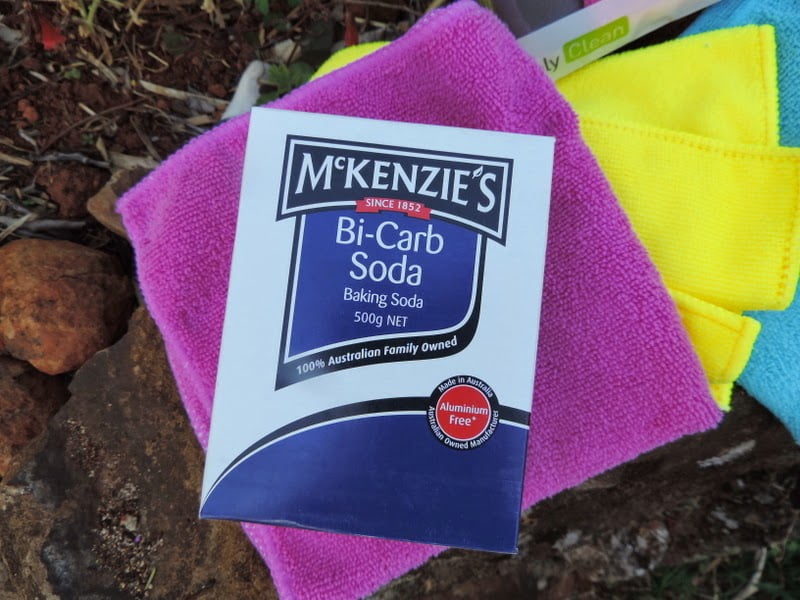
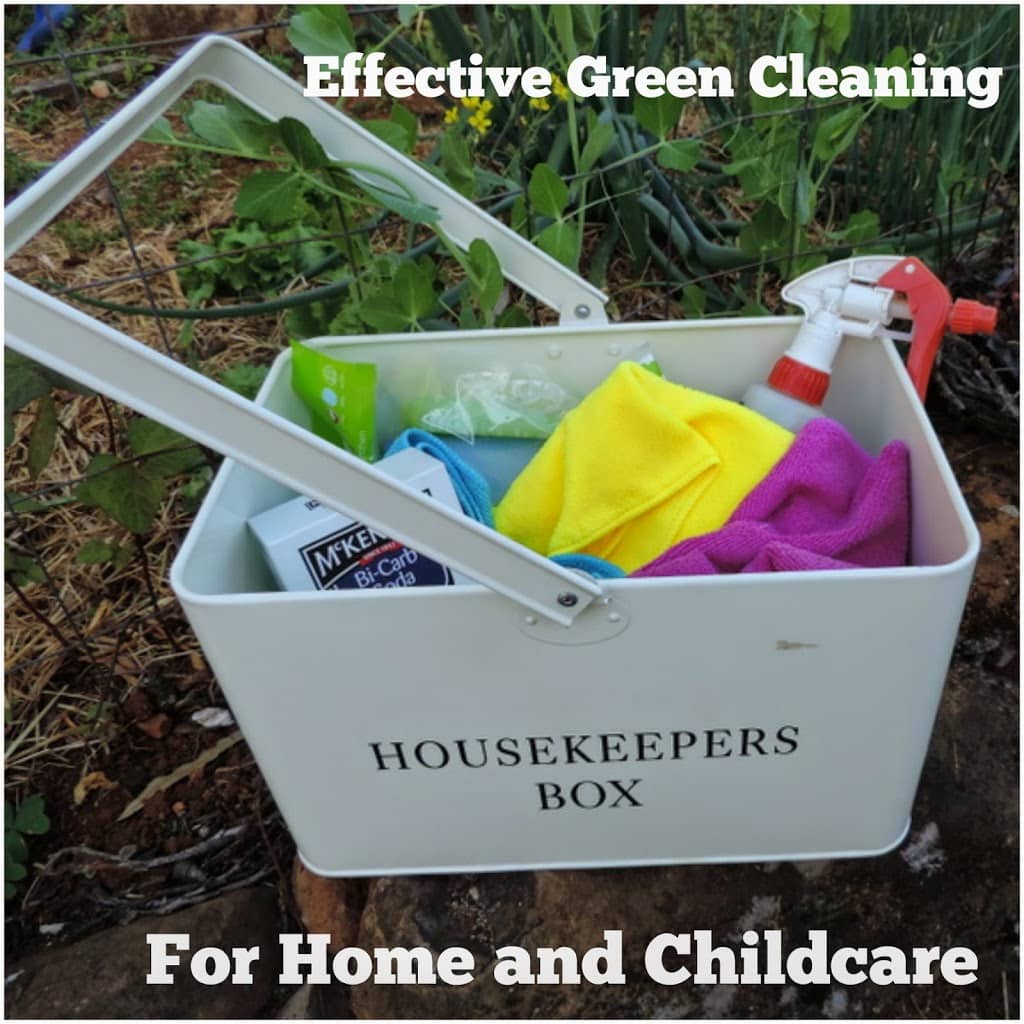
You have to be nominated for the best cleaning mom! You are amazing! And you are such an inspiration! I will use all of your tips! I’ll come back soon for more interesting post!
Green cleaning is usually budget friendly. But the main reason people don’t go with a green cleaning company is that they believe it’s more expensive than a regular cleaning service.
I am sensitive to lots of different chemicals I have trouble breathing itchy eyes and nose Different perfumes effect me I wash all surfaces with warm soapy water and I have two steam cleaners one for doing surfaces furniture and toys and one for the floors I do not like chemicals of any type around children or myself I like your laundry detergent so I am going to make some Thank you
I can certainly relate Catherine – hope you find the laundry detergent recipe useful 🙂
I’m interested in this for my child’s daycare but they said they need something that says it’s hospital grade. I’m assuming state regulation. is there anyway to get that on this product?
No I don’t think so sorry Lorene. It could be a state regulation depending on the area you are in but more likely it is a requirement of your service, unfortunately not all are onboard with cutting down on chemicals.
Very interesting and motivating. Thanks so much for sharing! Excited to try these cleaning tips!